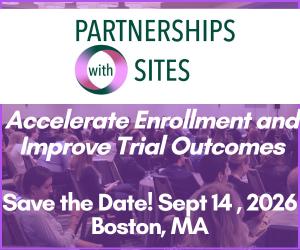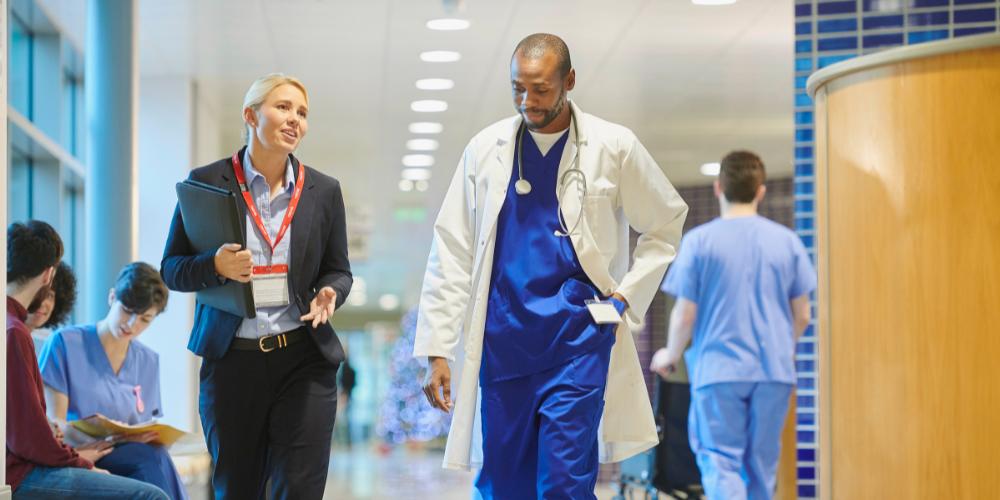Archive Highlight: Dr Laura Esserman, USCF, Leverages Adaptive Trial Designs to Help More Patients
Dr Laura Esserman discusses how physicians can engage in research and how she incorporates trials into her work as a breast cancer surgeon. She is Director of the Carol Franc Buck Breast Care Center and Co-Leader of the Breast Oncology Program for the Comprehensive Cancer Center, and leads the I-SPY and WISDOM trials.

What led you to pursue your minimally invasive approach to breast cancer screening and surgery?
Over the last thirty years or so, we’ve learned a lot about breast cancer. We’ve learned that it is not one disease. And we don’t treat it that way anymore. There is a lot of new information that helps us now. In the 1980’s, a lot of the cancer we saw was later stage. A majority of cancers we were seeing were high risk. And that’s really what was in people’s minds. In the meantime, screening began in the late 1980’s. Screening really changed the nature of the types of cancers we were finding.
It changed the population without anyone realizing it. We were all in the mindset of, “Early will be better; the smaller it is, the better it is. Every cancer will inexorably progress and kill you and finding it early will solve all the problems.” However, we have learned that early stage cancers are not just precursors of later stage high-risk cancers. There are different kinds of cancer. We know that now. There are some cancers that will probably never kill you, and some cancers that will kill you even when they’re small. That just wasn’t understood in the ‘80s when the whole movement started.
What I’ve tried to do is take a step back and say, “You don’t need to be in one camp or the other. We need to be in the camp of learning and understanding and trying to right-size our interventions.” Do more for the people that have higher risk and less for the people that don’t.
That’s fundamentally what I’ve done in my career. First starting with I-SPY, really trying to understand, “How do we focus on people at the highest risk for early recurrence and move the development of promising drugs to an earlier stage setting where people are actually curable?” If we start earlier in the disease cycle for cancers that we know are on a lethal trajectory, we can make a difference.
How have you enacted your approach?
Traditionally, surgery has been the first treatment for women with breast cancer. But there are many good reasons to change the order of therapy. A good response often means that less surgery is needed. Giving systemic therapy first, before surgery, is an opportunity not just to find the right drugs, but to course-correct. If the response is excellent, you can continue on the same path. If the response is poor, then there is still an opportunity to change treatment. But you have to generate options and drugs to change course.
That’s really the purpose of the I-SPY Trial: first trying to find out, “Are there drugs that can improve response over standard therapies?” Yes.
Our next phase is to try and start figuring out how to optimize and work towards the paradigm where you start with novel therapies that are more targeted, and less toxic. If that doesn’t work, you move onto the best treatment for each specific tumor type; if that doesn’t work, you move on to the next best thing.
Then we started trying to work on a diagnostic test: a molecular definition, something you can measure at the time of diagnosis so that you can right-size the treatment. I’m a surgeon; I’ve been operating on women for 30 years and I’ve been involved in giving all types of therapy. There are consequences to everything we do. So if there are some people who don’t need treatment, and we can be pretty certain of it, that would indeed be a boon.
Personalizing care gives you the opportunity to right-size your treatments. If that is true, then we have to ask the question: Does “one size fits all” really work in screening when there are all these different cancers and people have all these different risk factors? It’s just not logical to me. All I’m trying to do is start by asking the questions.
“If we harness all these smart people going into medicine and say, “Think of a way to improve,” to figure out how to make our dollars go farther and our care better, I think we could solve the problem."
Providing patients with different options has clearly informed your career and is a critical part of the “Clinical Research as a Care Option” ethos. When did that notion first come up for you?
Actually when I went to business school, after I finished my surgery training, from 1991 to 1993. I thought, “What business puts out a product where they have no idea if it works, and what the outcomes are, and just keeps doing what they’re doing?” We were sent out in teams to do quality improvement and that’s when I thought, “We’re never going to get real quality improvement until we have some level of automation and a different mentality in the way we deliver care and try to improve it.”
It was really a transformational notion for me. I have been on a mission to change medicine. I came out and started the Breast Care Center at UCSF with the idea that we are going to tailor treatments to biology, patient preference and clinical performance.
We should be practicing to improve. Science and technology are improving; we should be constantly improving. The fundamental basis for the way we practice needs to change. We haven’t really changed since the ‘70s. Our electronic clinical records are really not that different from the way we do things on paper. We need to be thinking about what things we need to collect to be able to move this field forward.
When we practice, the philosophy used to be, “We can’t check off boxes. Medicine is an art.” Medicine is an art; an art in which you engage with people and you’re creative. But you can be very creative if you have access to information at your fingertips, which we don’t have. Our business should be quality improvement. We should have to look at our outcomes; that should be a requirement of everything we do.
It shouldn’t be just a few people who are killing themselves to do research. Every physician should want to know, “How am I doing? Is this something that I should do?” If we harness all these smart people going into medicine and say, “Think of a way to improve,” to figure out how to make our dollars go farther and our care better, I think we could solve the problem.
Why do you think clinical care and research have been so siloed?
I don’t think the system for either is very good, because of this lack of feedback and because of redundancy of effort. So much of everyone’s effort is in repeating and recopying and having to redo a lot of the work. A lot of our attention is diverted away from effort that could go into improvement and analysis and finding new things to try. And that’s true in both research and care. I fundamentally don’t think the systems should be different. They both start with capturing core information. And both need a common and trusted source of truth and to work together to assemble it.
In the past, you have spoken about embracing new adaptive trial designs and new technologies to bridge the gap. Is there anything you’ve seen in the last few years that is encouraging to you?
I’m continuing to push forward. It’s not just having technology and tools; it’s actually being able to rethink what your workflow is going to be. You have to think, “How am I going to make it so the collection of data is something that everyone can contribute to in a serial way and we can have a trusted single source of truth?” That’s a cultural change. We’ve been working a lot on that and thinking about what our processes should be. I actually think it’s quite possible.
We’re working on tools; we have a project with the FDA to further develop OneSource, and we are looking at patient-reported outcomes as well. We’re focusing this particular effort around adverse events: How do we collect adverse events from patients? How do we do a better job of collecting adverse events from clinicians in such a way that it informs our clinical care and our trials?
At Dreamforce, in collaboration with a team at Salesforce, we presented a concept for how to use blockchain to improve the way we send laboratory data around. The idea that people are still copying lab data and hand- entering it into case report forms is shocking; that would be the one thing you would think really ought to work easily. But in fact, it doesn’t because every lab has a different reference range. What we should do is put out a network; everyone should be part of that network, and we should record lab values and the reference range and just normalize it.
It was something that I got asked by one of the teams that we’re working with, “Do you have any good ideas for how to apply the concepts of blockchain?” And so I’m constantly learning about new technologies and new tools. The ideas are great, but you have to figure out ways to be able to implement it to effect change.
"We don’t want to make it 15 years for every drug to get to market. We want to get it 3-5 years, using early endpoints and different combinations of drugs and tumor biomarkers, to understand why it works in just one type versus another.”
Is the innovative nature of the trials you’ve designed applicable to other indications?
There’s a number of things that made breast cancer a great place to start, but there’s nothing unique about it where it’s the only one that’s amenable to that. What made it so unique is that we got to a point where we were able to drive a lot of science.
It started by women being very unhappy with their options and demanding better options. We had a rapid evolution of our scientific understanding. There were just a lot of the pieces in place and a strong advocacy movement. There were a lot of physician advocates like me who really wanted to make things better.
As we are able to move to more molecular subtypes and our understanding is transformed from organ-based to pathway-driven paradigm for tumors, it will be easier to export the information we have in trials like I-SPY to other disease types. It may even be possible to transform I-SPY into a cancer pathways trial in the future.
The idea is to take the knowledge you have. We’ve been learning about the cancers by class and the drugs by class. There may be ways you can learn even faster. We don’t want to make it 15 years for every drug to get to market. We want to get it 3-5 years, using early endpoints and different combinations of drugs and tumor biomarkers, to understand why it works in just one type versus another. The more we learn and we cross-fertilize, the faster we’re going to be able to transform the field.
How is the WISDOM trial going?
We have 25,000 women, and we’re excited about that. We just got an extension from PCORI and have just been awarded an R01 to extend accrual to more diverse populations. We’re really reaching our stride and gathering momentum. I want to also transform how we get our payors involved. There we still need to do some more work and more people need to step up. I am determined we’re going to make this trial a success. If we understand people’s risk, and we understand what kind of cancers they develop, we can start to understand who’s at risk for what kind of cancer and then develop prevention studies – an adaptive platform design for prevention.
What is coming down the pipeline that excites you?
I think the change in how we understand biology; the different biologically based treatments that are emerging; and new drugs that actually work will make trials like I-SPY 2 able to succeed. We’re starting to understand why things work. If we can marry the concepts, and really change mindsets, toolsets and skillsets, it will be super exciting.
For more information on CRAACO: Clinical Research as a Care Option, visit CRAACOevent.com.







